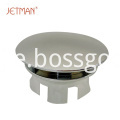[China Aluminum Industry] The rare earth element is located in the third sub-group of the periodic table, with a large atomic radius, a unique 4f electronic structure, a large electronic magnetic moment, and strong spin-orbit coupling. Its chemical properties are very active. Its chemical activity is second only to the alkali metal and alkaline earth metal elements in the metal element, and it can form chemically stable oxides and sulfides with almost all non-metal elements (oxygen, sulfur, halogen elements, etc.). , halides, etc.; in the formation of rare earth complexes, the coordination number varies from 3 to 12, and has a diverse crystal structure. The unique physical and chemical properties determine the various roles of rare earth elements in aluminum alloys.
3.1 Metamorphism The metamorphism treatment refers to the process of changing the crystallization conditions of the alloy to change the structure and properties of the alloy by adding a small amount or a small amount of a modifier to the metal and the alloy. Studies have shown that rare earth has a good metamorphism in the alloy, mainly in the refinement of grains and dendrites. The atomic radius of rare earth elements is larger than that of aluminum atoms, and the properties are relatively lively. It melts in the aluminum liquid and easily fills the surface defects of the alloy phase, which reduces the interfacial tension between the old and new phases and increases the growth rate of the crystal nuclei. A surface active film is formed between the alloy and the alloy liquid to prevent the grown crystal grains from growing and refine the alloy structure. Addition of rare earth can also reduce the spacing between columnar and secondary dendritic arms, improve grain morphology, and to a certain extent control the grain size of the material. Experiments have shown that rare earth metamorphism has a certain incubation period, and rare earths can play a large role in metamorphism only if they are maintained at high temperatures for a certain period of time.
3.2 Refining purification The rare earth has a good purification effect on the aluminum alloy melt. First, rare earth elements such as RE2O3, RE2S3, RES, RES2, RE3S4, REH2, REH3, and REX3 (X is a halogen element) and other chemically stable compounds are easily formed with O, S, halogen elements, etc., and are obtained at 250 to 300°C. The N action produces a refractory REN. At high temperatures, rare earths react with C, Si, and B to produce REC2, RE2C3, REC, RE2C, RE3C, RE4C, RESi2, REB4, REB6, and the like. At the same time, the adsorption of hydrogen by rare earths is particularly large. It can adsorb and dissolve hydrogen in large quantities, and can remove hydrogen from aluminum alloys. The compounds of rare earths and hydrogen have higher melting points and are dispersed in aluminum liquids. These compounds are formed as compounds. The hydrogen does not form bubbles, greatly reducing the hydrogen content and pinhole rate of aluminum. Secondly, rare earths can be combined with Sn, Bi, Pb, and Zn, which are low melting point elements in aluminum alloys, to form binary or multi-components with high melting point and light density. When the metal smelting temperature is lower than their melting point, these compounds float on slag to precipitate. In order to purify the aluminum liquid, their tiny particles become heterogeneous crystal nuclei in the aluminum crystallization process to refine the grains. Later, the addition of rare earths can improve the physical and chemical properties such as surface tension, flowability, and viscosity of aluminum alloy melts and slags. It is beneficial to the spheroidization of non-metallic inclusions and promotes their floating, which can effectively remove non-metallic inclusions.
3.3 Alloying The existence of rare earths in aluminum alloys is mainly in three forms: solid solution in the matrix α (Al); segregation in the phase boundary, grain boundary and dendritic boundary; solid solution in the compound or exist as a compound. The existence form has a great relationship with the amount of addition. When the rare earth content is low (less than 0.1%), the rare earth is mainly distributed in the former two forms, and the strengthening of dislocation proliferation is promoted by limited solid solution and increased deformation resistance. When the rare earth content is more than 0.3%, it exists mainly in the third existing form. The rare earth and other elements in the alloy form many rare earth-containing new phases, which are distributed in the grain or in the grain boundary, and also make the shape, size, and shape of the second phase. Changes have occurred (most of the rare earth-containing second phases have been characterized by particle formation, spheroidization, and refinement), and a large number of dislocations have occurred, which has strengthened the aluminum alloy to some extent.
Accessories for bathroom ceramic hand wash basins includes drainers and overflow ring. If order q`ty is big enough, we could open the mould for you only. Styles have push down pop-up and color is up to your choice. Sample also could send for evaluation once confirm. Warm welcome to contact with us and JETMAN will do all the best to satisfy you well.sink hole cover Basin accessory lavatory Equipped with most advanced casting equipment and computerized kiln, Jetman is able to meet daily capacity of 3,000pcs. By installing most advanced production equipment, JETMAN has introduced more than 300 designs into its range, including Thin-edge basin, Mid-edge basin, Cabinet Basin, laundry basin, Art Basin, Counter basin and Color Basin. Thanks to its own R&D department, Jetman has an edge over others in developing exclusive designs upon customer drawings. Options of purchasing either AB grade or A grade are available.

Acessory,Sink Accessory,Sink Hole Cover,Basin Hole Cover,Basin Launching Devic
GUANGDONG ZHIJIE SANITARY WARE CO., LTD. , https://www.zhijiesanitary.com
